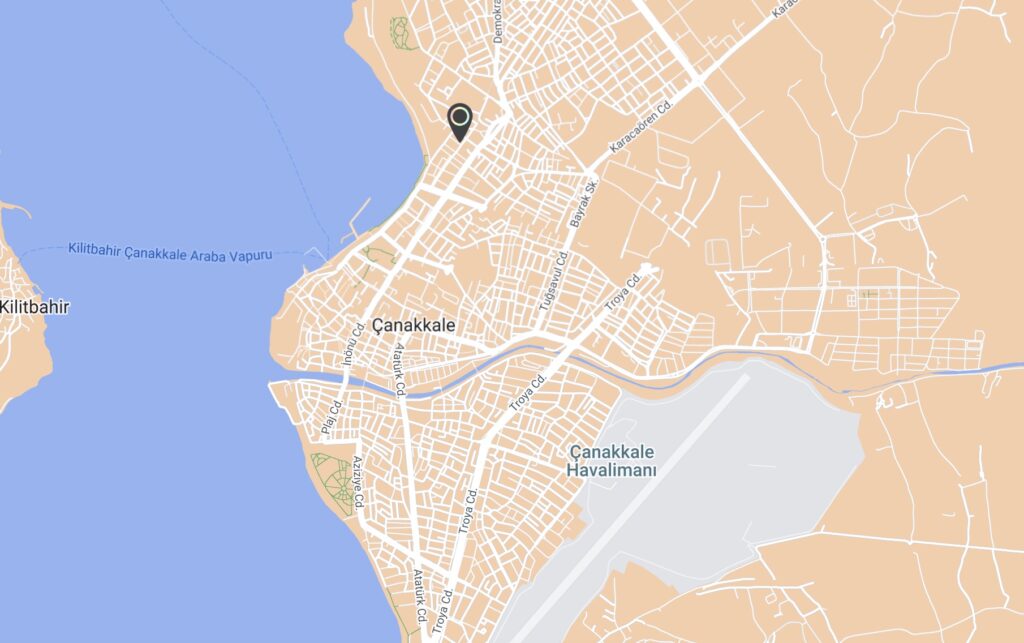
To see all the destinations listed in this guide and other ceramic sites worldwide, check out Ceramic World Destinations (CWD), MoCA/NY's interactive map listing over 4,000 destinations!
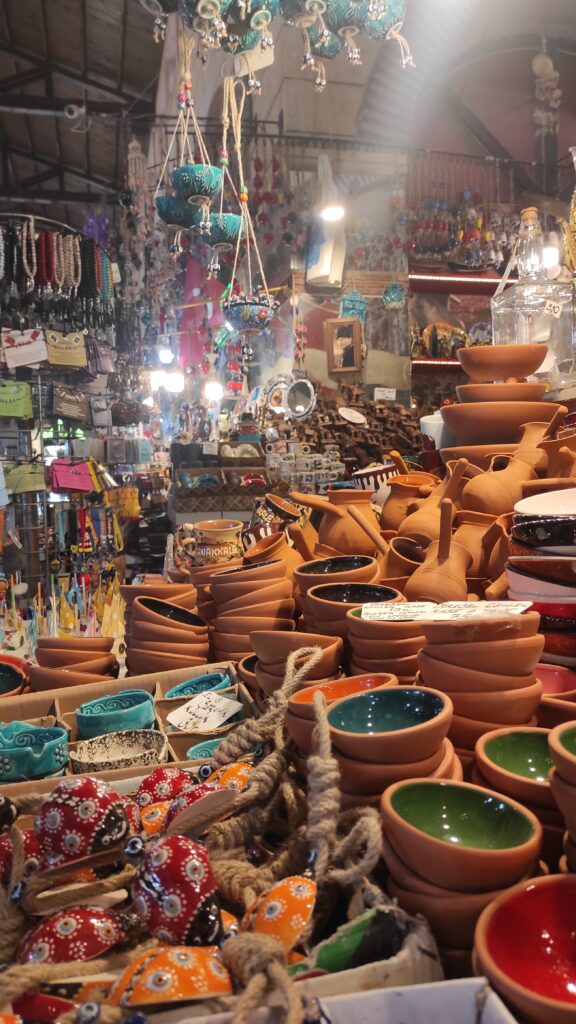
Located in the northwest of Turkey, Çanakkale is renowned as a stunning coastal town, distinguished among the many ceramic-rich towns in the country. Today, the city proudly preserves its vibrant ceramic heritage and historical legacy. Often referred to as the 'Potter's City,' Çanakkale embodies its rich past while embracing its present charm.
Çanakkale was originally an Ottoman fortress named Kale-i Sultaniye, meaning Fortress of the Sultan. Over time, it became renowned for its pottery, hence the later name 'Çanak Kalesi,' which translates to 'pottery fortress' from the words 'çanak' for ceramic bowl and 'kale' for fortress. From the late 17th century until about the first quarter of the 20th century, Çanakkale was a prominent center for ceramics production, creating works known for their distinctive forms and originality.
Situated on the Dardanelles Strait, one of the main water passages connecting the Aegean and Black Seas and separating the Asian and European sides, the city boasts a rich history and culture. It holds significance as the nearest major town to the ancient site of Troy.
Since ancient times, owing to the availability of suitable clays for pottery-making in its region, Çanakkale has emerged as one of the most important centres for ceramic production, both nationally and internationally, particularly in terms of exportation overseas. Ceramics originating from Çanakkale have brought considerable innovation to Anatolian Turkish ceramic art due to their distinctive styles, compositions, colours, and designs.
Çanakkale ceramics is a folk art that stands out with its simplicity, contrary to Iznik or Kütahya ceramics decorated with flamboyant patterns made for the palace. Animal figurines are a category of late Canakkale ceramics which are very popular among collectors. Horses, lions, and camels (standing or sitting), and fantastic birds, decorated with rosettes and painted with various colours, are offered as souvenirs to the sailors and travelers of the countless ships passing through Canakkale.
Designs are painted in purplish brown, orange, yellow, dark blue, and white under green, brown, oxide-yellow, and colorless glazes. Dishes are decorated with galleons, mortars, mosques, and dwellings as well as animal figures such as fish and birds.
In this charming town, you will find various accommodation options according to your preferences. It is easy to find a comfortable place to stay in hotels or B&Bs on both sides of Çanakkale (Asian and European sides) that welcome guests with their cozy atmospheres. The most exclusive accommodation venues, such as Truva Hotel, Akol Hotel, Limani Hotel, Foreigners Hotel, and Kervansaray Hotel, located in the city center, will make you feel at home.
TIP: check this website for various accommodation options.
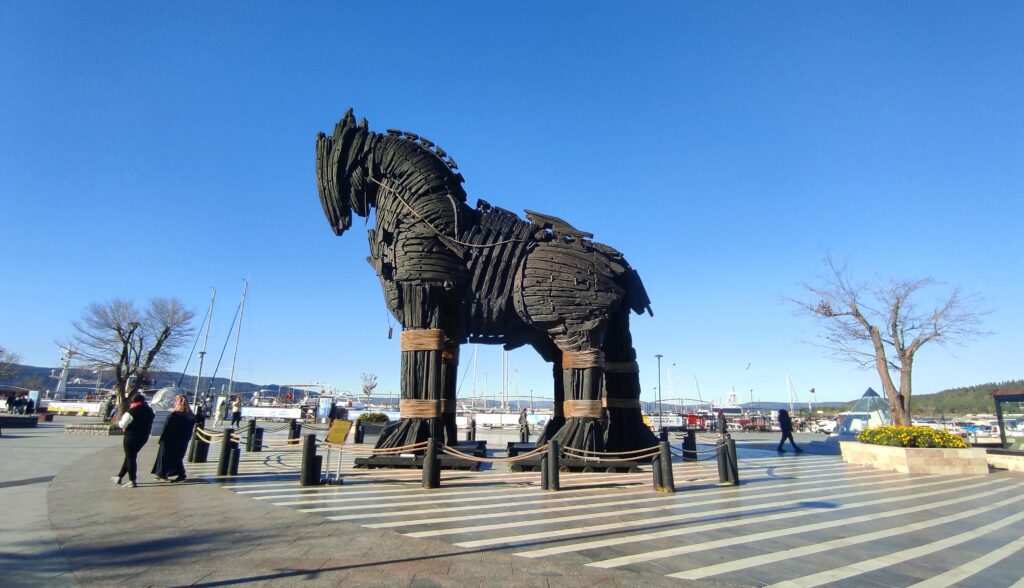
Due to the small size of the city centre, you may not need to use transportation to visit the ceramic shops as most places are easily accessible on foot. However, if your accommodation is located far from the city center, you can take advantage of the public buses or rent smart scooters or bicycles provided by the municipal services.


The Çanakkale Ceramic Museum building was purchased by the Çanakkale Municipality from the Turkish Naval Force. This historical building, once a military bath, underwent restoration in 2013 through the municipality's long-standing efforts, transforming it into a ceramic museum showcasing prominent examples of traditional Çanakkale ceramics.
Within the museum, selected pieces from various collections are displayed, both temporarily and permanently, and the museum's studio produces replicas of original ceramics. Enthusiasts can visit and witness Çanakkale ceramics here, which not only reflects the taste of specific periods but also attract attention through their ethnographic diversity, quality, and creativity.
You can also view temporary exhibitions on the upper floor of the museum, and in the souvenir section on the lower floor, you have the opportunity to purchase commemorative ceramic products to take with you.
Finally, end the tour by spending some time in the garden venue, filled with the smell of history, which will make it an unforgettable experience.
At the Studio BABA, located next to the Çanakkale Ceramic Museum, you can witness Ergün ARDA's modern interpretations of traditional Çanakkale ceramics. Additionally, you can engage in enlightening conversations about ceramics and art with Mr./Dr. Arda, who serves as an academic lecturer at the city university.
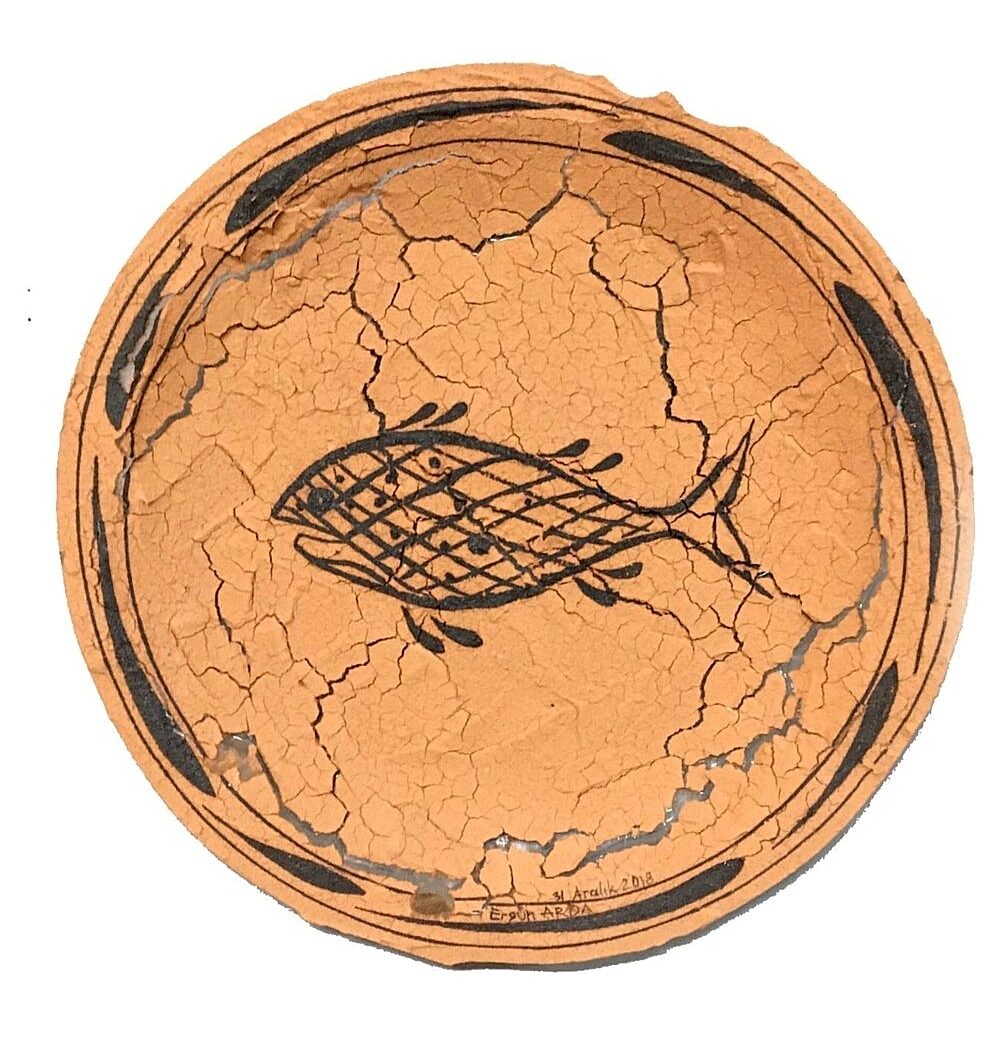
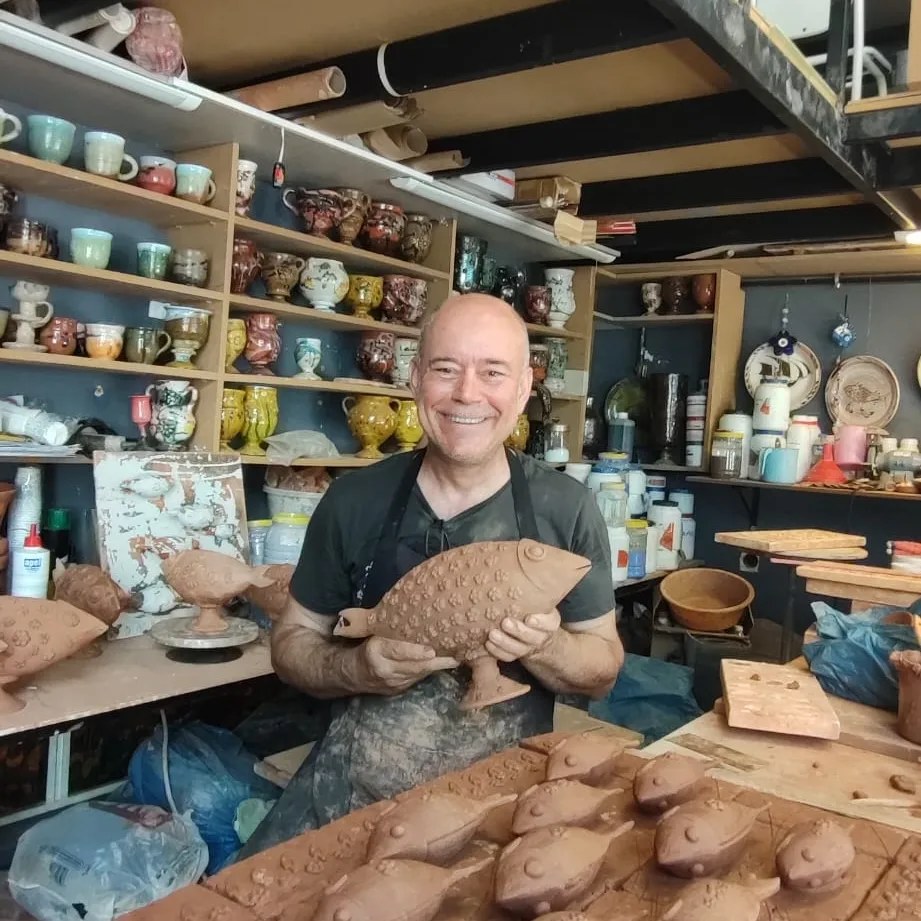

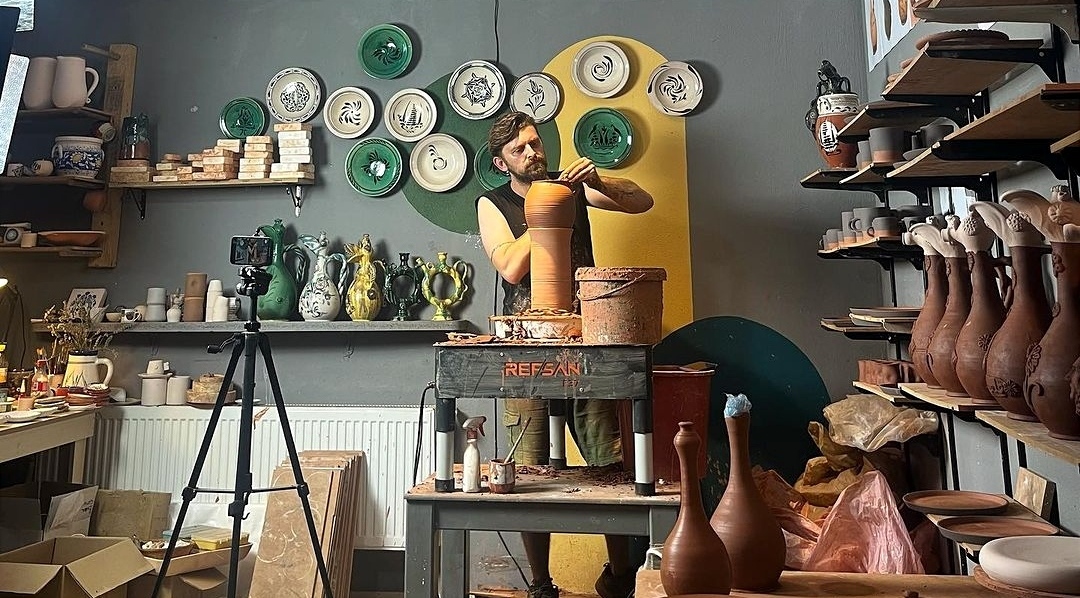
You'll transport through time when you explore the traditional ceramics produced by Burak Çiftçi at his workshop just ahead of the city centre. Mr. Çiftçi, a ceramic artist and potter from Çanakkale, demonstrates great mastery in creating replicas of traditional ceramics, a skill he has specialized for years.
His pottery mirrors traditional ceramics in form, color, decoration, and texture, earning a place in the collections of many enthusiasts.
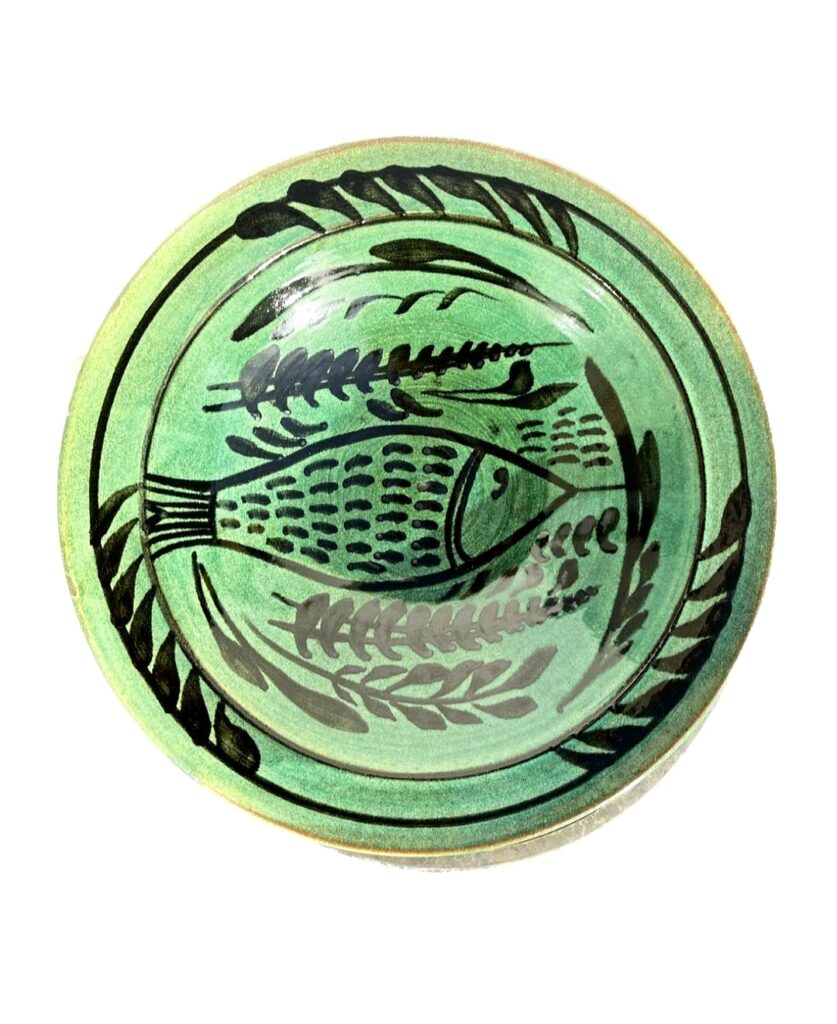
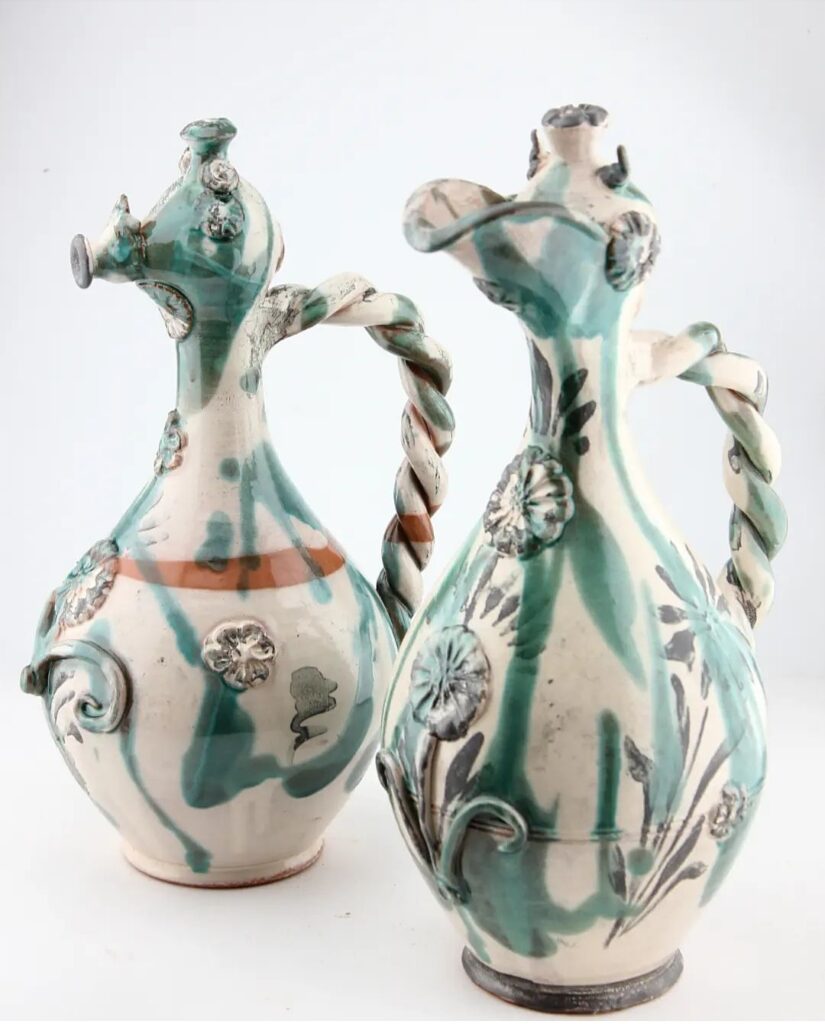
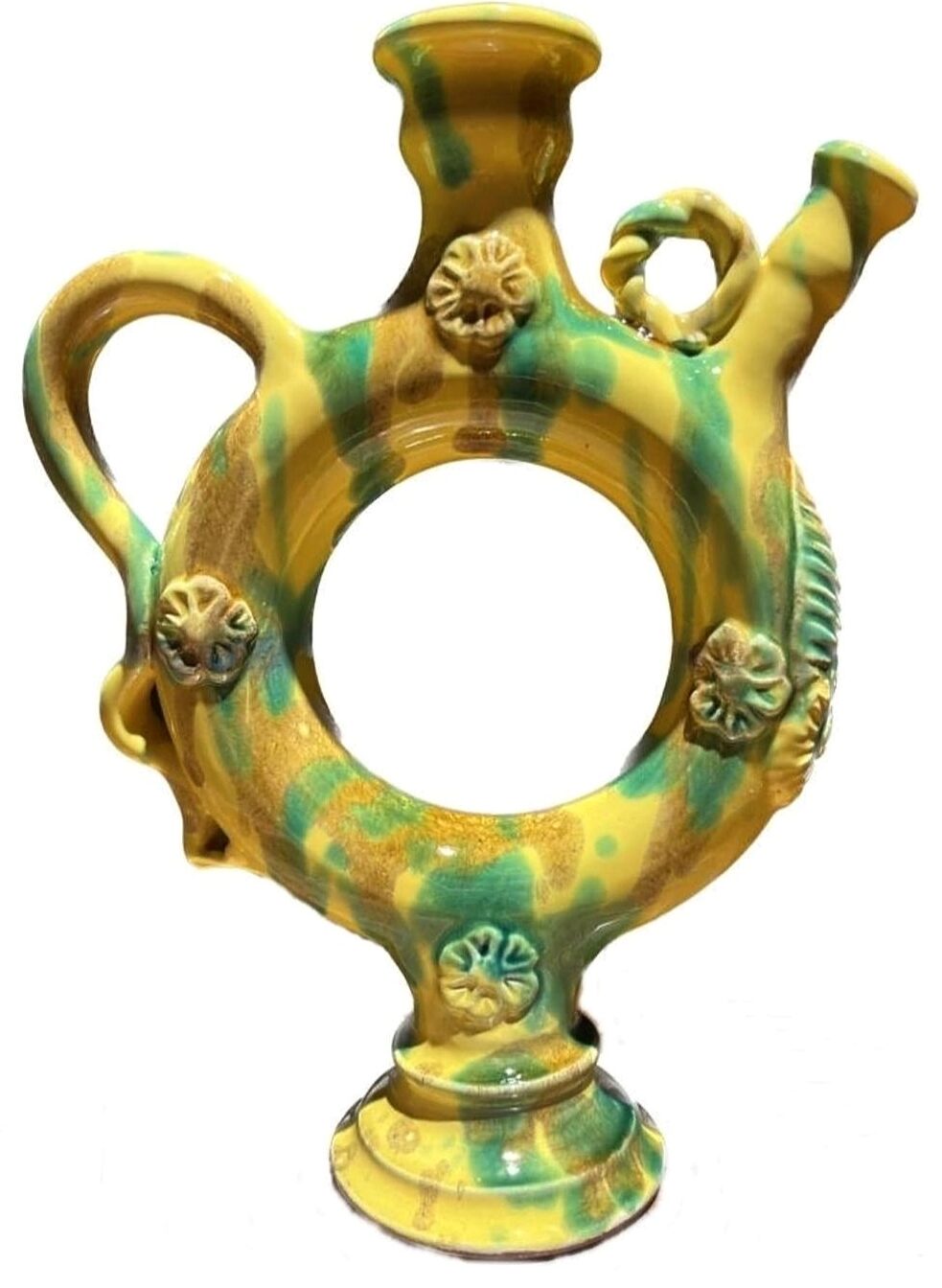

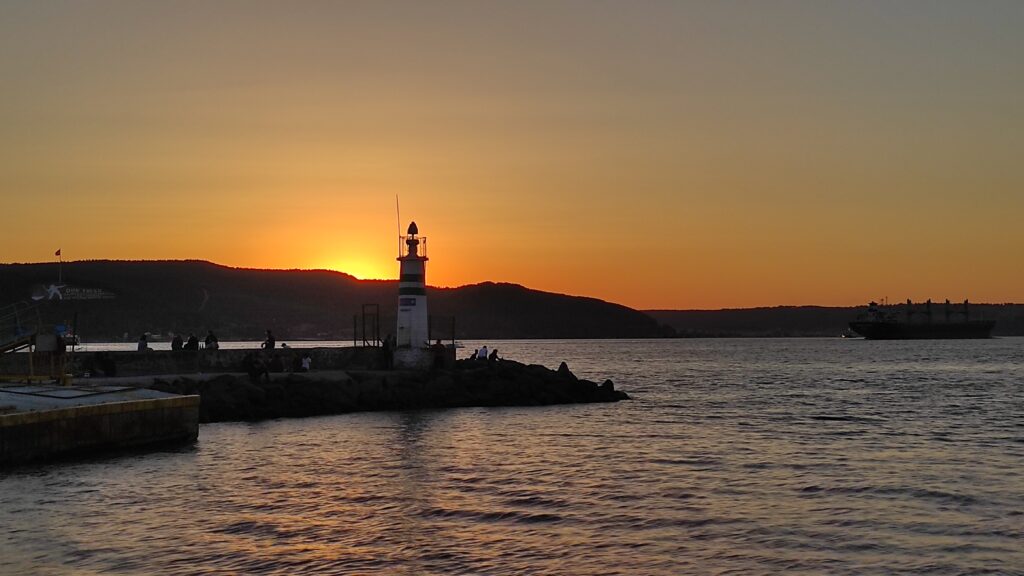
After your first day of touring ceramics, you can unwind by the sea. As you reach the seaside in the northern part of the city, you'll find a family-friendly spot to have some drinks. In this beautiful place, you can enjoy the view of the Dardanelles while sipping on Turkish coffee or tea.
The sunsets in the westernmost part of Turkey, are undoubtedly indescribable. From the rooftop of Gergedan Bar, you can sip your drink and relieve the tiredness of the day.
For those who prefer a quieter dining experience, have dinner at the Limani Restuarant which offers a variety. This place is located by the seaside, near Gestas Dock, and also features a hotel on the upper floor, making it a viable option for accommodation as well.
You can start your second day from the Çanakkale Art Gallery, which is often referred to as Madame Kety's mansion. Facing the Canakkale Strait, the gallery, managed by the City Cultural Directorate of Canakkale, hosts periodic exhibitions throughout the year. This historical venue not only accommodates various art events but also showcases works by local and foreign ceramic artists.

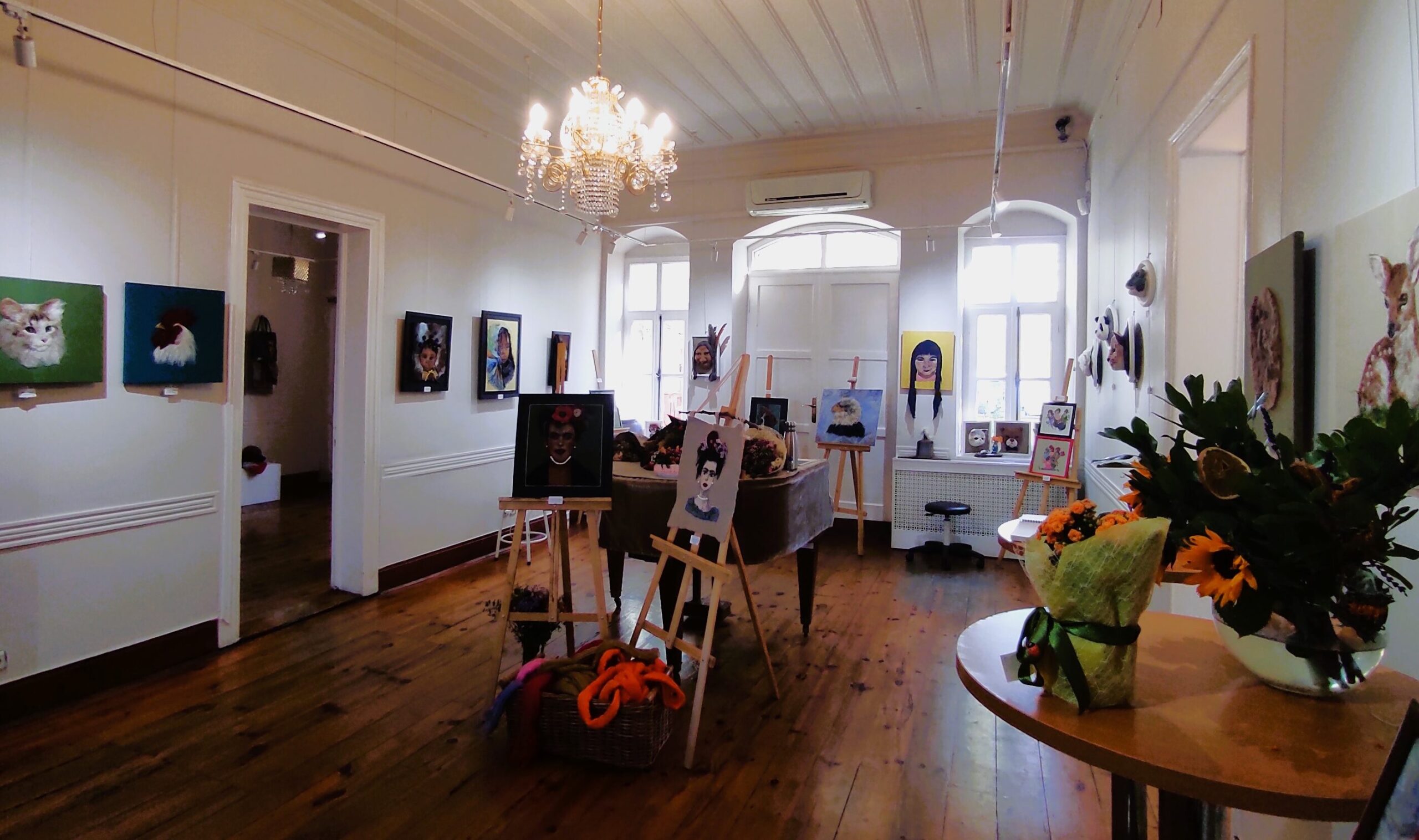
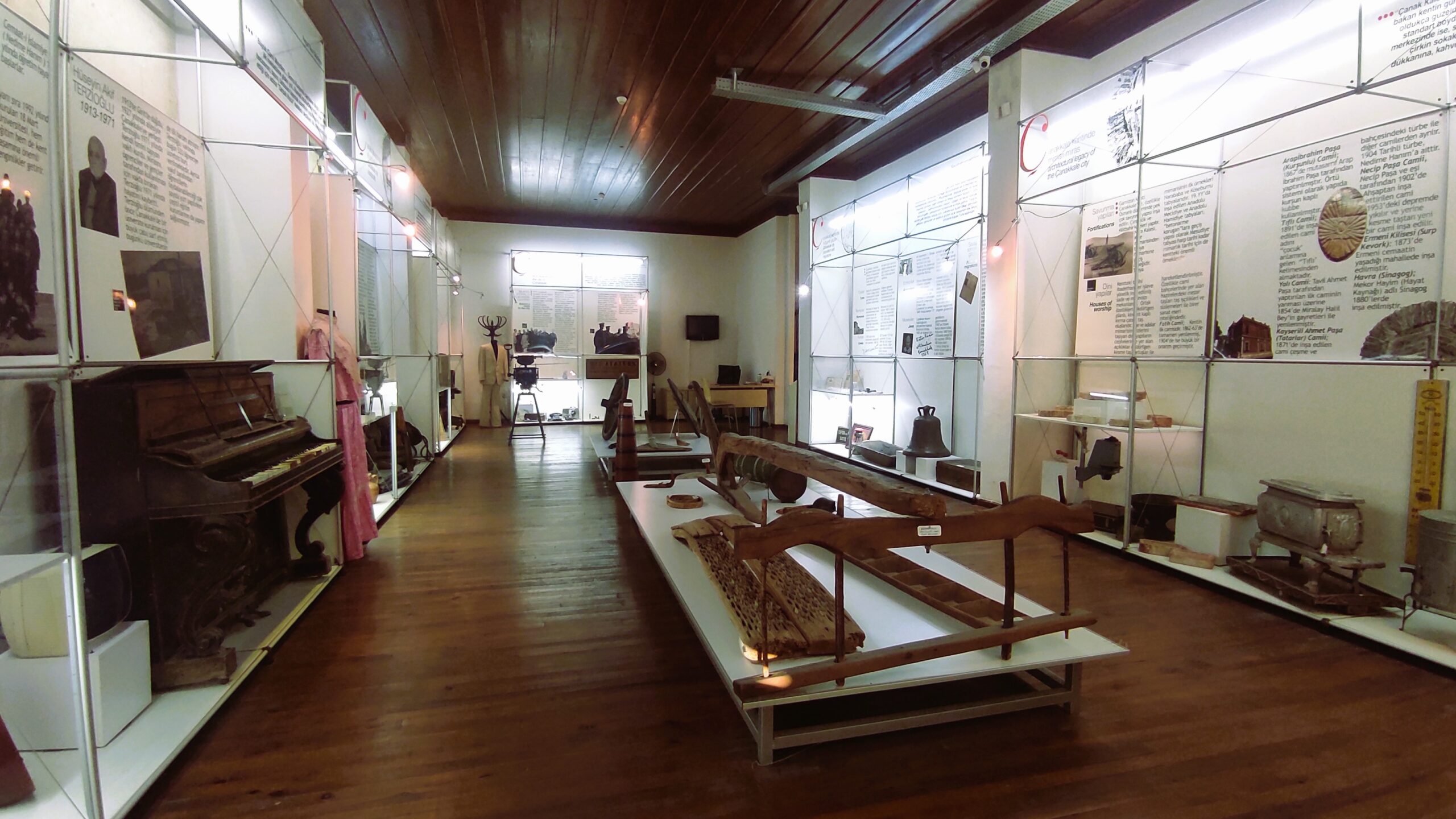

At the corner of Fetvane Street merging into Carsi Street, opposite Yali Mosque, you’ll see Çanakkale City Museum and Archive which opened its doors to visitors in 2009. The ground floor of this two-story building hosts temporary exhibitions, typically changing every two months.
The first floor comprises two interlocking sections. In the initial section, information boards detail Çanakkale's Ancient Periods, the Ottoman Period, and the First World War. This section also displays donated objects from the Çanakkale War in compartments along the wall. The second section serves as the primary exhibition space, featuring informational boards with texts and visuals covering various aspects of the city.
On the second floor, visitors can access the city archive and library, and see their collection of Çanakkale ceramics. For those eager to delve into the history of Çanakkale city, this museum offers a wonderful exploration.
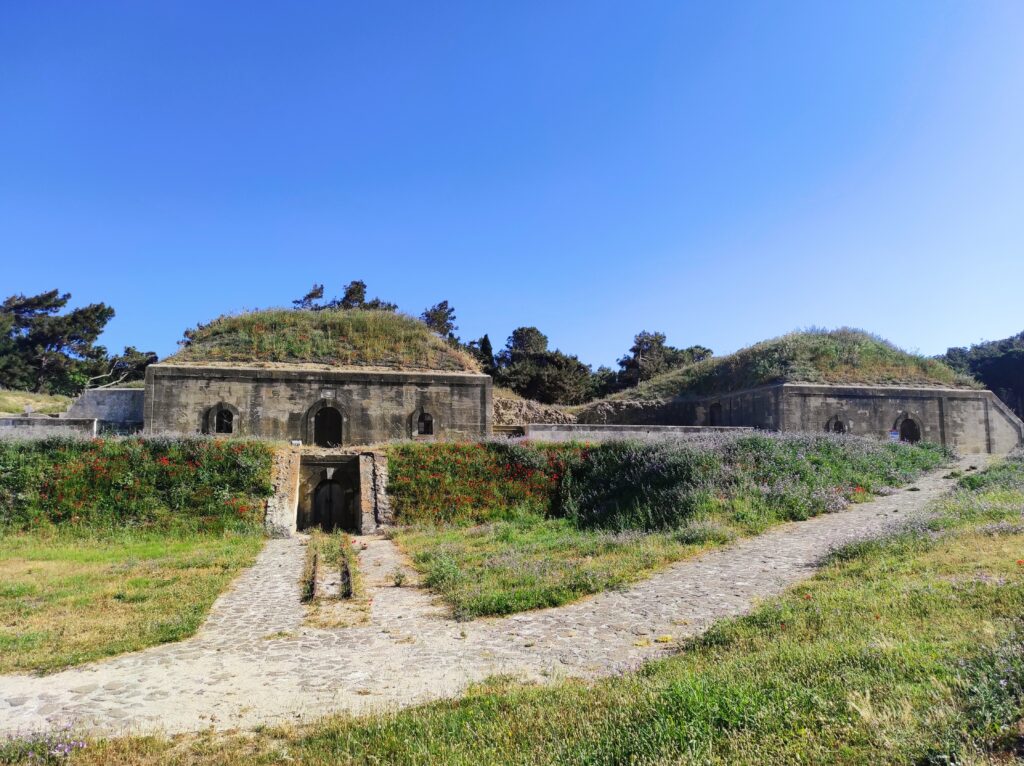
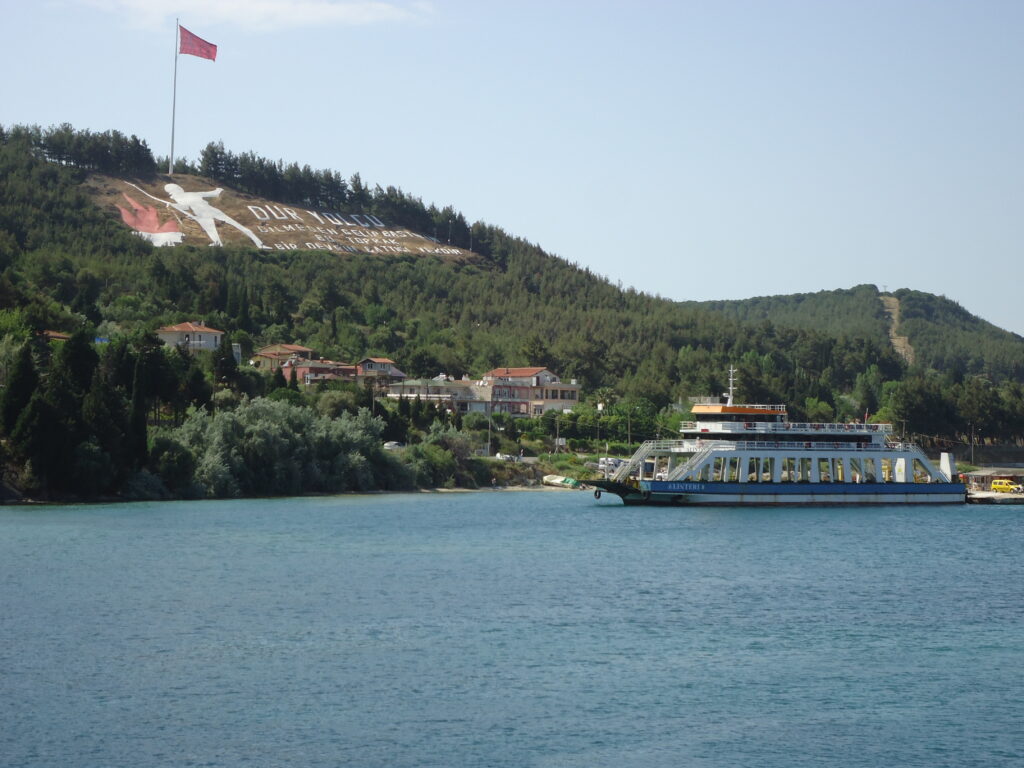
This charming village, steeped in tourism and history, is easily accessible via a ferry ride from the city center, offering the experience of seeing Çanakkale from the European side. Known as the 'Lock of the Sea,' this village marks one of the intersection points between Europe and Asia. Here stands the sole remaining castle, located at the heart of the city.
These castles, constructed during the Ottoman period by Fatih Sultan Mehmed, hold significant military and strategic importance. Today, this location serves as an attractive travel destination, inviting tourists to breathe in the scent of history.
On this tour, you'll have the opportunity to explore the castle's interiors and exteriors and take a short tour around the hills of Kilitbahir village, where small ceramic selling points await your visit.
Also, enjoy a unique street delicacy, fish bread, as your lunch in Kilitbahir village.
As you return to the Canakkale city centre, prepare yourself for an evening feast. Indulge in the exquisite dining experience at Yalova restaurant, an incredible culinary destination in Canakkale known for its gourmet delicacies and seafood. You can also enjoy a seaside view if you prefer a table outside. The restaurant is located close to the ferry dock, along the city's southern coastline.
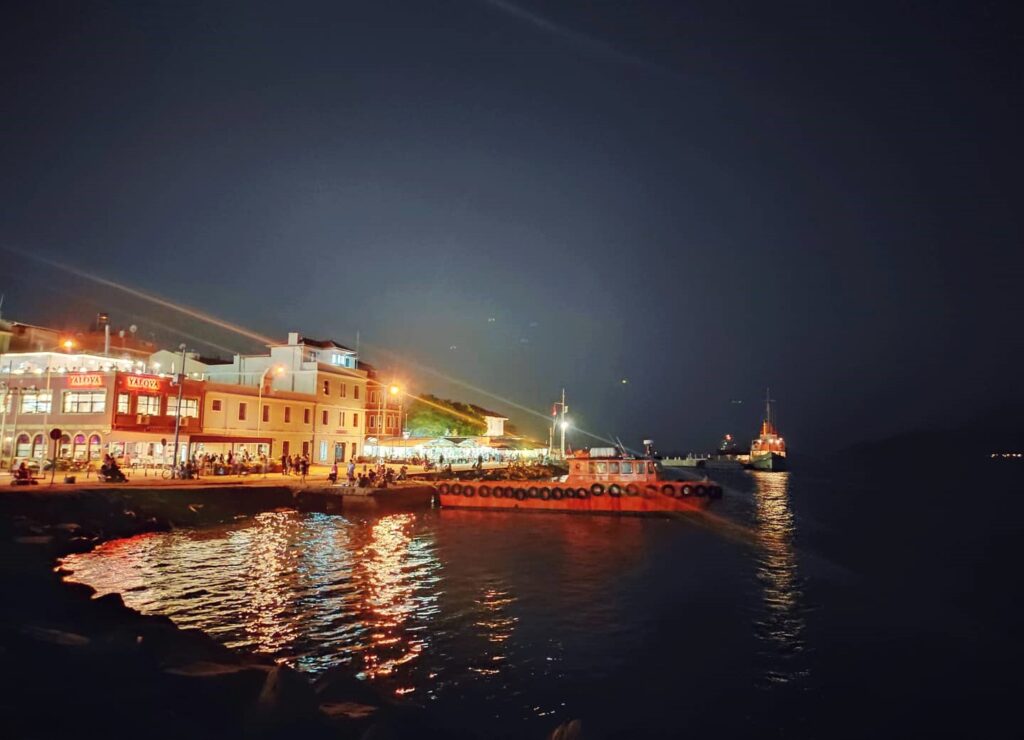
Enjoy your morning exploring Cimenlik Castle and the Naval Museum located on the Canakkale side of the castles. This castle was ordered to be constructed by Mehmet the Conqueror in 1452. It now operates as a small military museum featuring exhibits on the Gallipoli battles and some war relics.

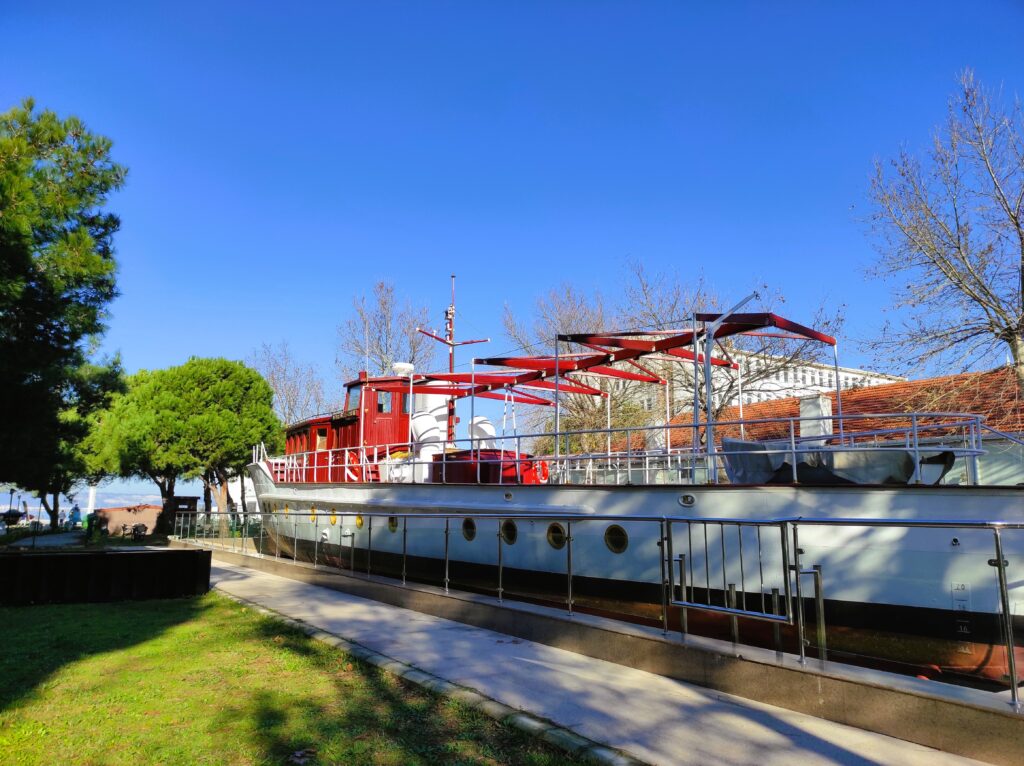
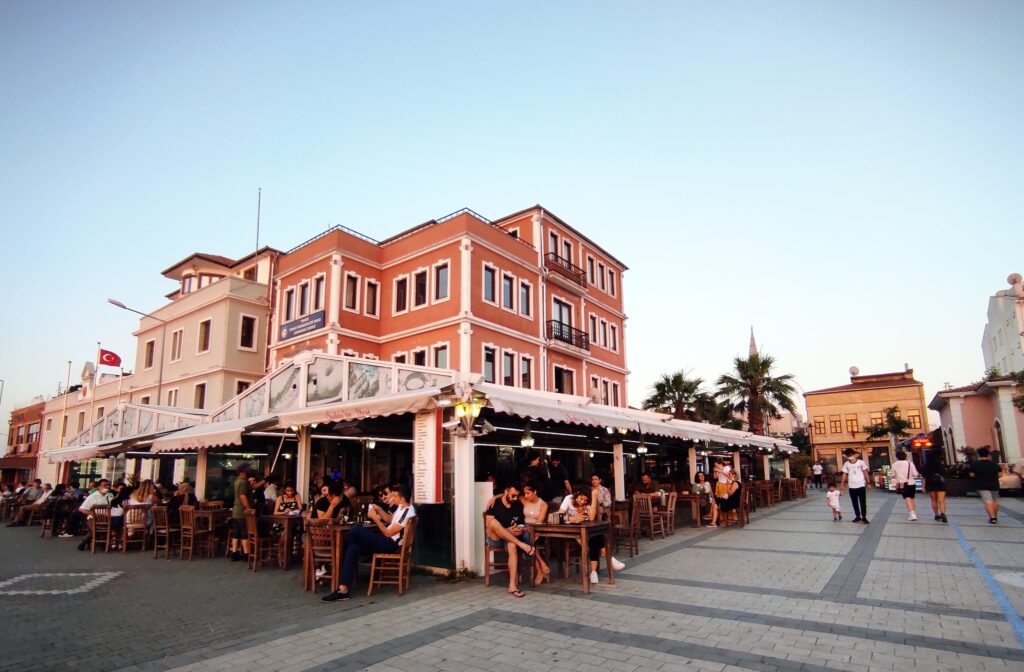
Sakir’s Place holds nostalgic value for anyone who spent their childhood in Çanakkale. It's the perfect spot to enjoy freshly brewed Turkish tea while observing the ships sailing in and out of the Dardanelles.
Surrounding the historic clock tower square, you'll discover a great selection of dining and drinking options. Among them is 'I Love Fish,' located directly across from the tower. 'I Love Fish' is an initiative by Dardanel, one of Turkey's most important canned food and seafood companies. Here, you can choose from a diverse menu, ranging from seafood fast food to sushi, and experience the love of fish.
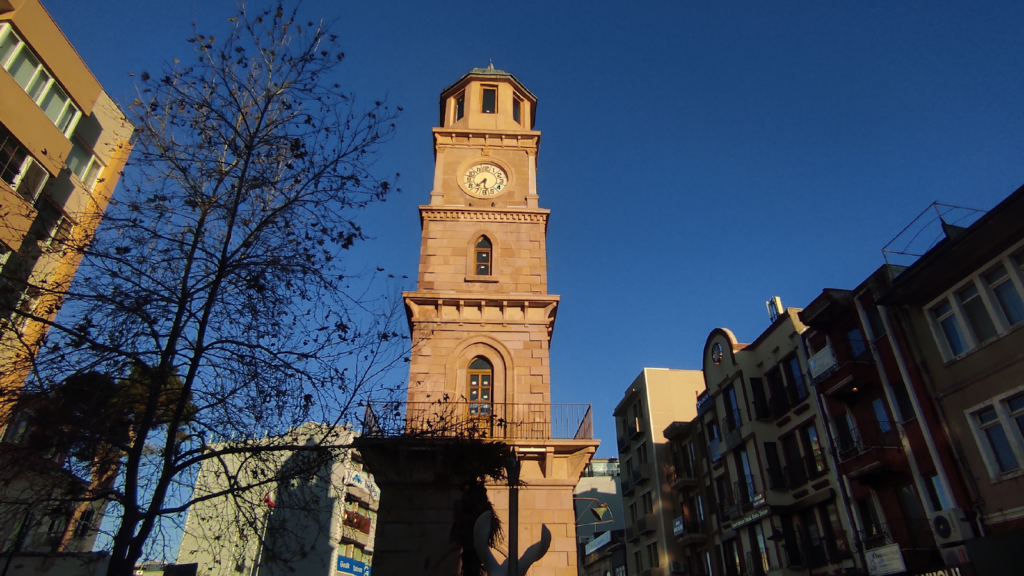
Prepare for an intergenerational experience as you witness the tradition of establishing ateliers next to the castle, a practice dating back to the Ottoman period, which continues to thrive today. Many workshops in the Fevzipasa District welcome ceramic enthusiasts, continuing their production and offerings. Here are some notable examples:
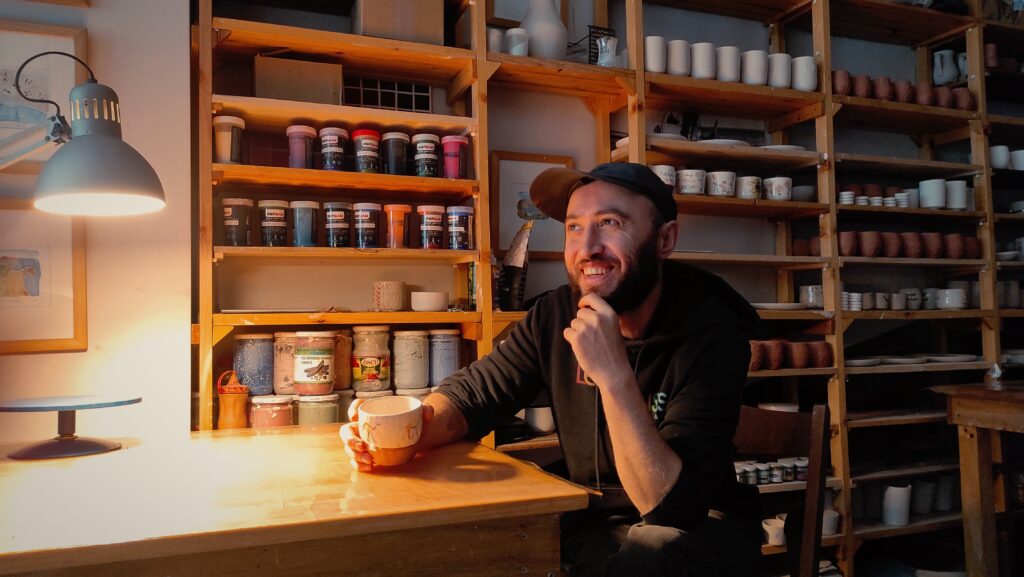
Adem Yavuz, known for producing some of the most original ceramics in the city, has infused pop art elements into his creations. His postmodern ceramics feature a combination of life mottos and depictions from our surroundings, hand-drawn by Yavuz and transferred onto the ceramics.
We guarantee that sipping coffee from one of these cups will bring a smile to your face. You can also commission Yavuz to engrave personalized expressions onto his ceramics.
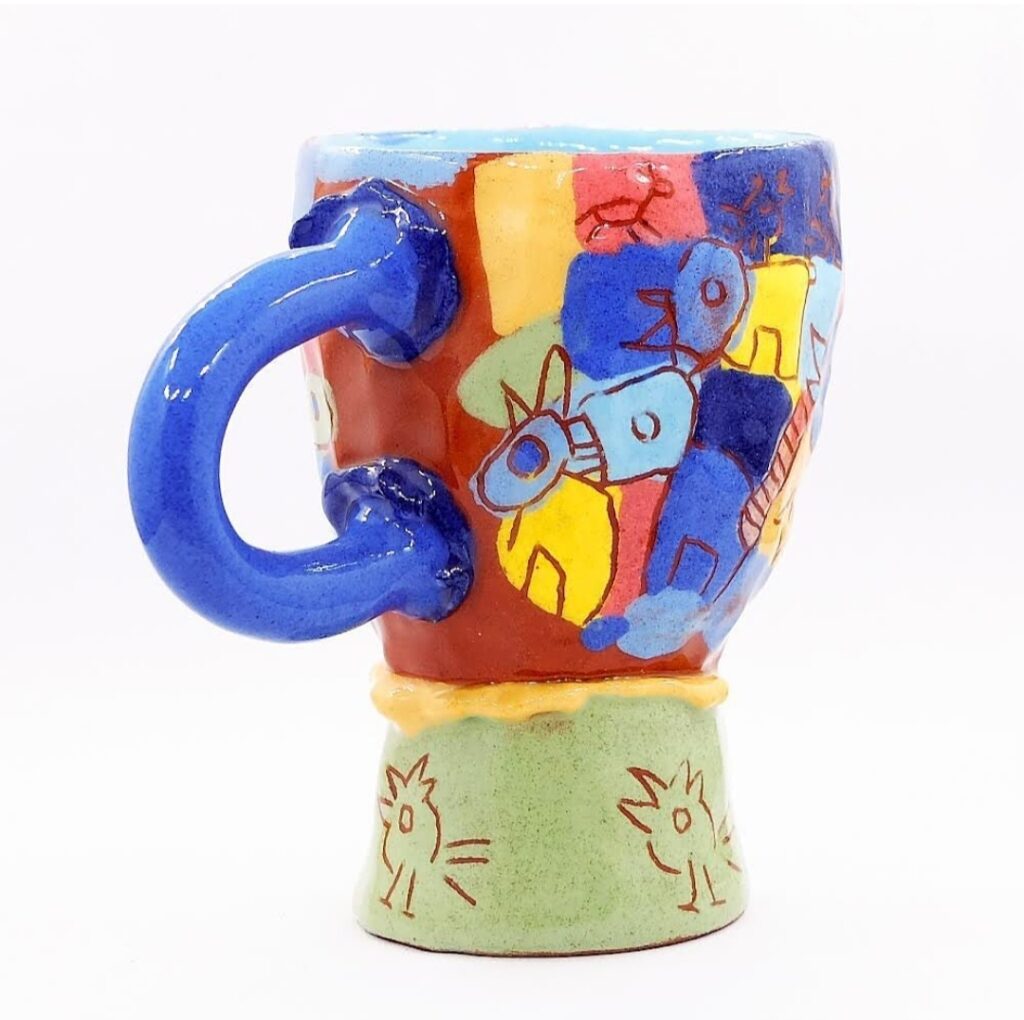

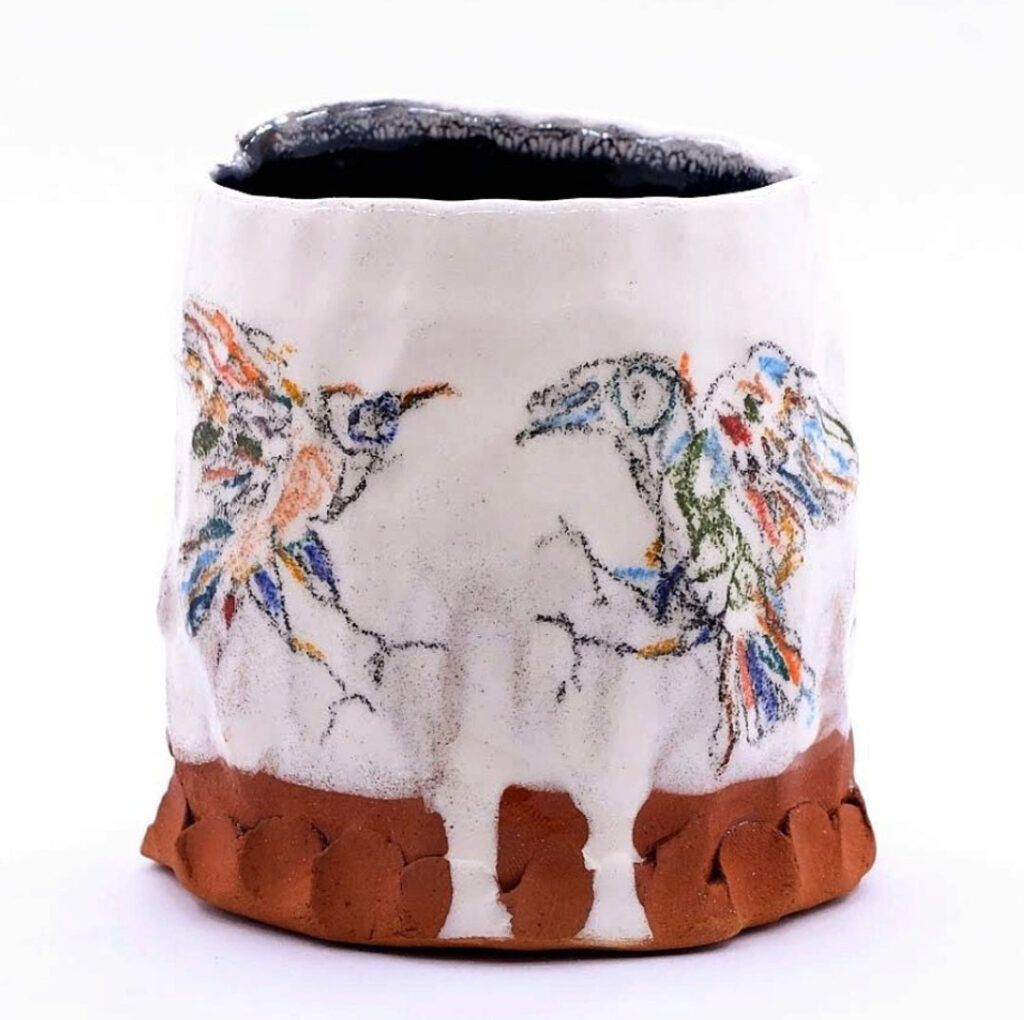

The workshop owned by Ilter and Burcu Ozyildirim, two prominent ceramicists in Çanakkale, produces ceramics that push the boundaries of creativity. Their workshop features a wide array of fun figurines alongside iconized products. Offering pleasure, fun, and childlike excitement together, the Ozyildirim couple also organizes workshops for those interested.
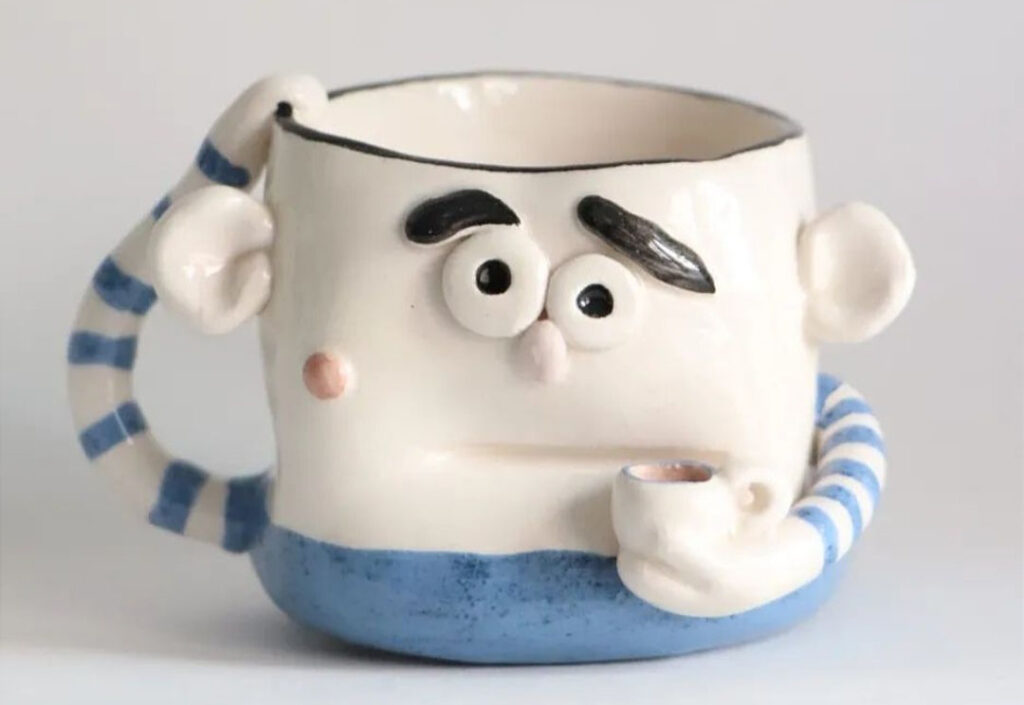
This covered 'bedesten,' which has been the subject of local songs of Canakkale, stands as a significant icon of the city. Formerly known as Canakcilar Pazari (Potters' Market), it resembles a miniature version of Istanbul's Grand Bazaar. Today, it's said that only the entrance gate of the Mirrored Bazaar, situated on Carsi Street in the heart of Canakkale, remains in its original state. Following restoration by the Canakkale Municipality, this bazaar has gained further popularity.
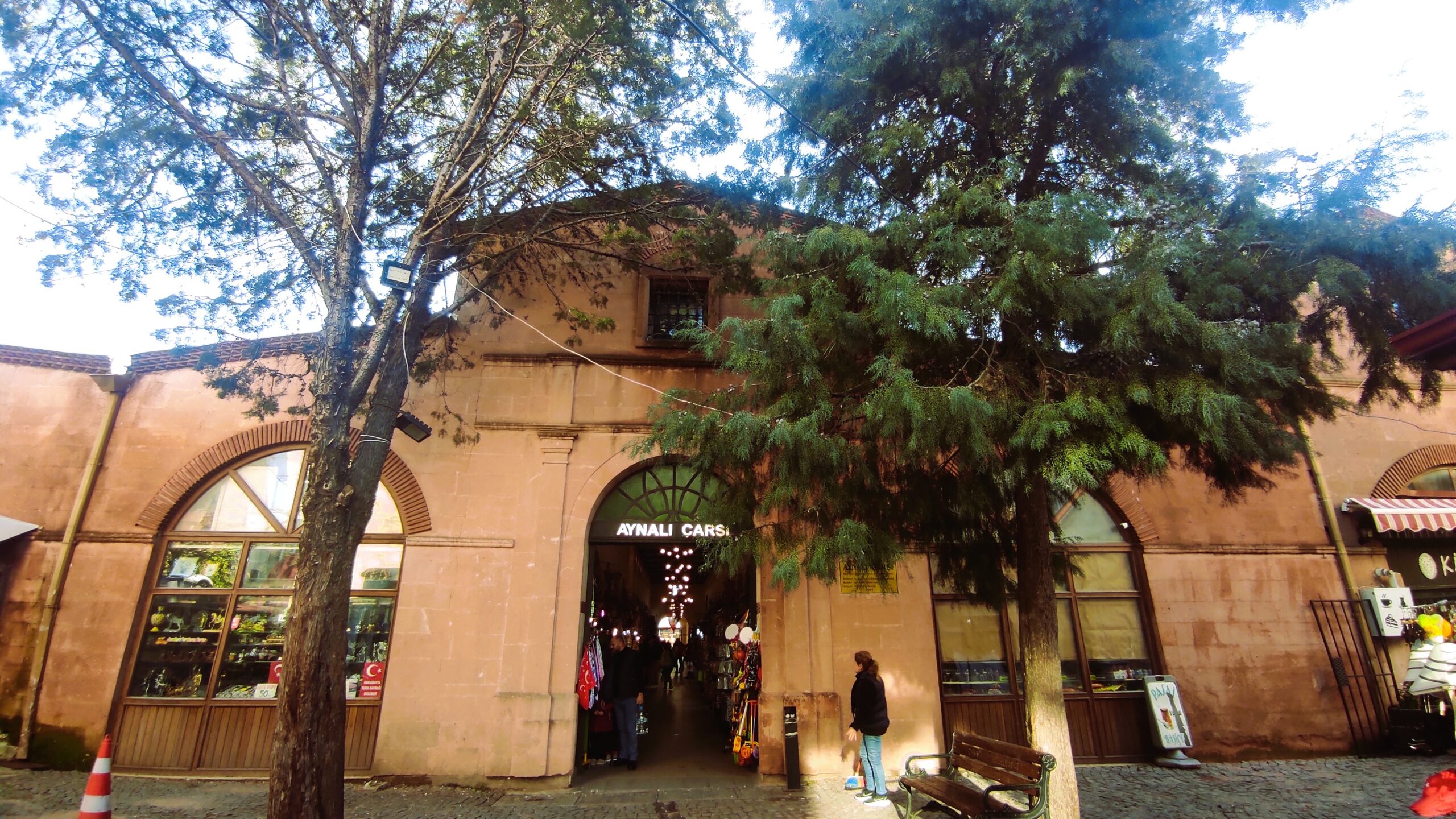

Here, you can discover a wide array of spices, local products, and an extensive range of rich souvenir options. Enjoy the tradesmen's conversations in the bazaar, where you will spend time visiting small workshops and ceramic sales points.
Apart from a few boutique ceramic studios, some shops operate on a wholesale basis. Ceramics such as mugs, pots, magnets, and various products come from different production ateliers around Çanakkale and many nearby towns and provinces. These shops are mostly engaged in artisan trade.
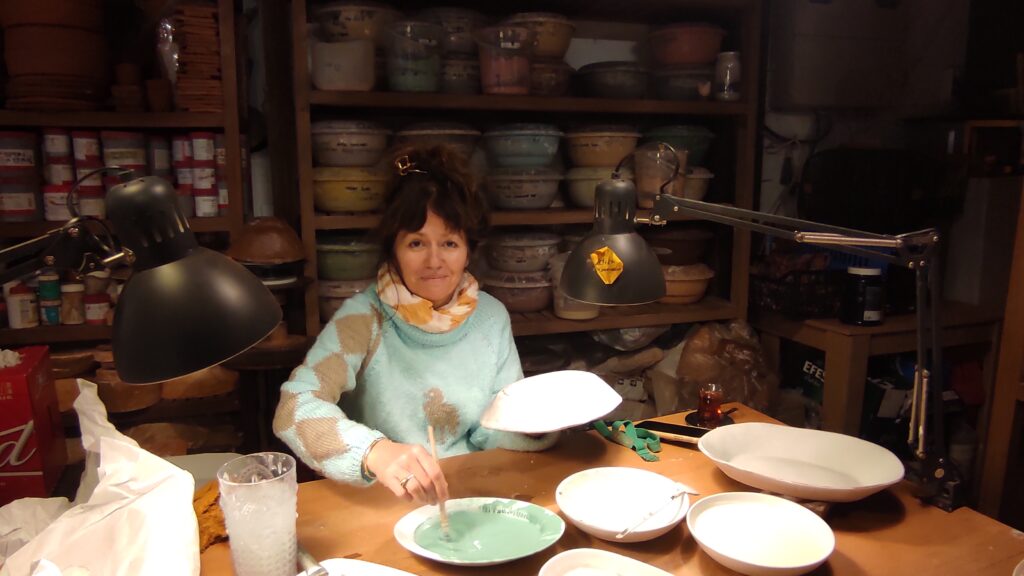
Ayse Kunelgin, a prominent ceramicist in Canakkale, has run her workshop at the entrance of Yali Inn for over twenty years. This significant workshop, the product of long effort and patience, is one of the pioneering establishments among the new generation of artists in Canakkale.

You'll find symbols of the city—cats, horses, birds, and various herbal forms—created as decorative trinkets.
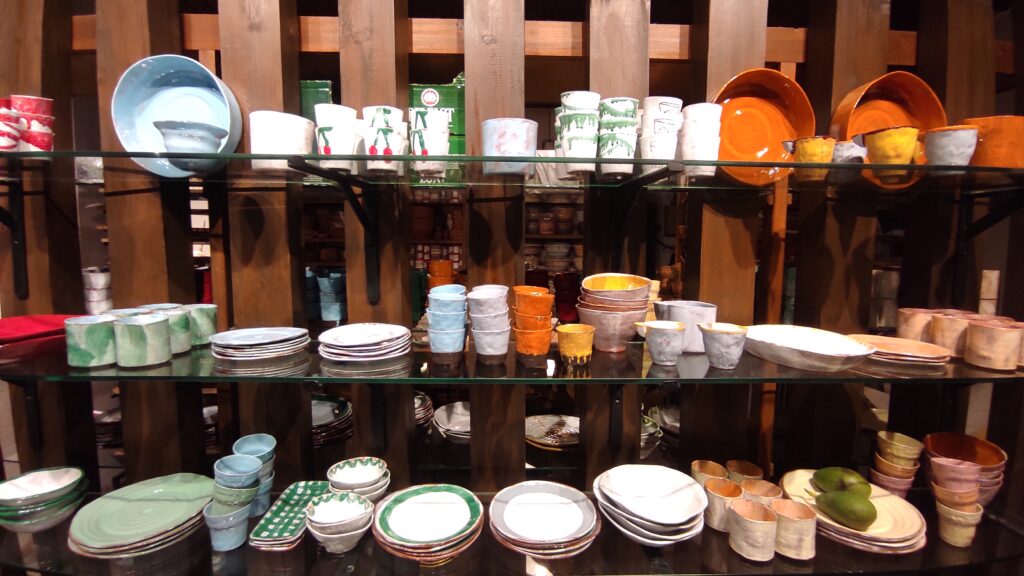
Since 1889, this historical venue, also known as the passenger inn of Canakkale, has welcomed travelers for centuries. Notably, it stands as Turkey's only double-covered inn, featuring front and back doors, making it a cherished social hub in the city. Nowadays, it is a meeting point where people of all ages, especially youngsters, are regulars.
Aside from the Han Coffee House, which offers cold and hot beverages, Yali Inn boasts bars, ateliers, and boutique shops, creating a delightful and cozy atmosphere where intellectual activities often take place. Even if you choose to sit alone, you'll soon find yourself engaging in social interactions, and who knows how many people you will meet to make lasting friendships.

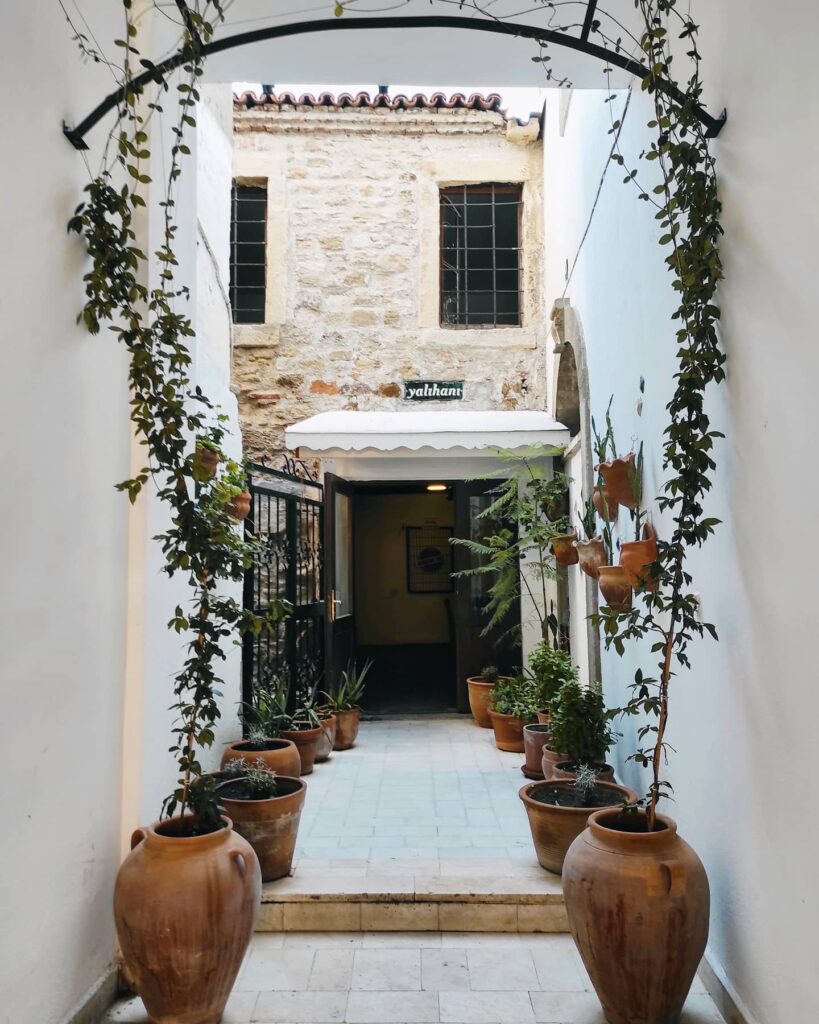
On your final evening in Çanakkale, indulge in traditional Turkish appetizers (meze) and salads while savoring Turkish raki at Mor Salkim Meyhanesi. Located on Bar Street, the city's liveliest street, this restaurant offers a pleasant dining experience. Following dinner, enjoy the colorful world of Bar Street.
To reach the museum, located 30 km away from the town, aside from renting a car, you can opt for public minibusses. The minibusses to Troia depart from the shelter station, providing services every half hour, and will take you directly to the Troia Ancient Site in Tevfikiye village. From here, you can first start your tour by visiting Troia Ancient City, then explore the Troia Museum.

The Ancient City of Troia, renowned as the battleground of the Trojan War mentioned in Homer's Iliad, was included on the UNESCO World Heritage List in 1998. Dating back to 3000 BC, it stands as one of the world's most famous archaeological sites. Ongoing excavations since 1871 have revealed the city's history of construction and destruction across numerous layers. These excavations unearthed forty-two building layers and nine city layers, unveiling a theater, baths, various artifacts, an advanced sewage system, and building foundations. Today, archaeological efforts continue under Canakkale 18 Mart University. The Troia Museum houses some of the most remarkable discoveries from these excavations, offering visitors the chance to witness these outstanding examples firsthand.
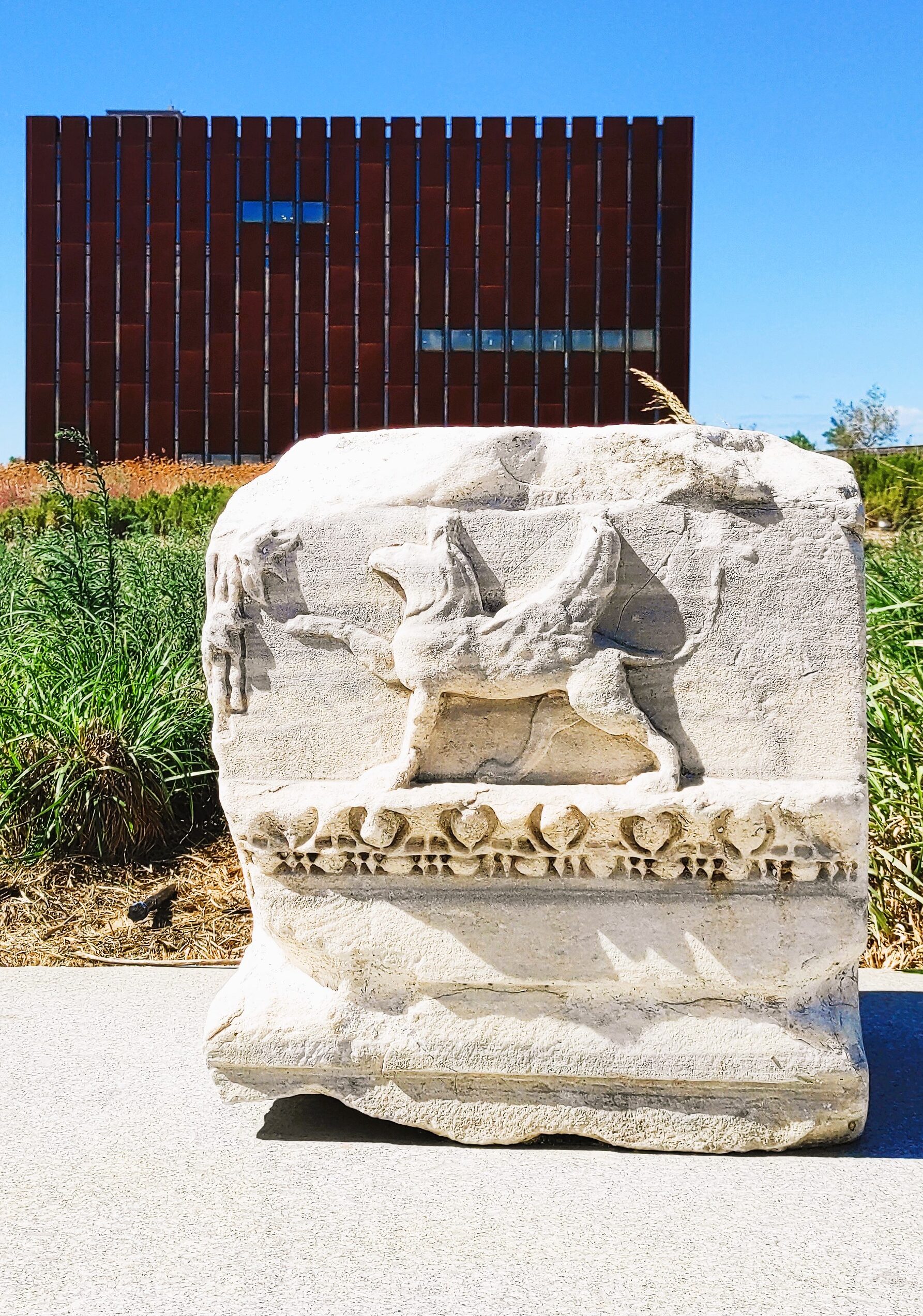
Opened in 2018 to visitors, the museum building is located at the entrance of the Ancient City of Troy in Tevfikiye Village, operating as a unit of the Canakkale Museum Directorate. The construction of the Troy Museum began in 2013 following the National Architectural Project Competition with Free Participation and Single Stage.
At the Troy Museum, visitors delve into the life, cultures, and archaeological history of Troy, which left its marks on the Troas Region and is renowned for Homer's Iliad Epic. This narrative unfolds through artifacts from the excavations.
While visiting the museum, visitors follow a story divided into seven sections: Archaeology of Troad Region, Bronze Age of Troy, Iliad Epic and Troian War, Troas, and Ilion in Antiquity, Eastern Roman and Ottoman Period, History of Archaeology, Traces of Troy. Enjoy seeing the antique ceramics excavated from each layer.



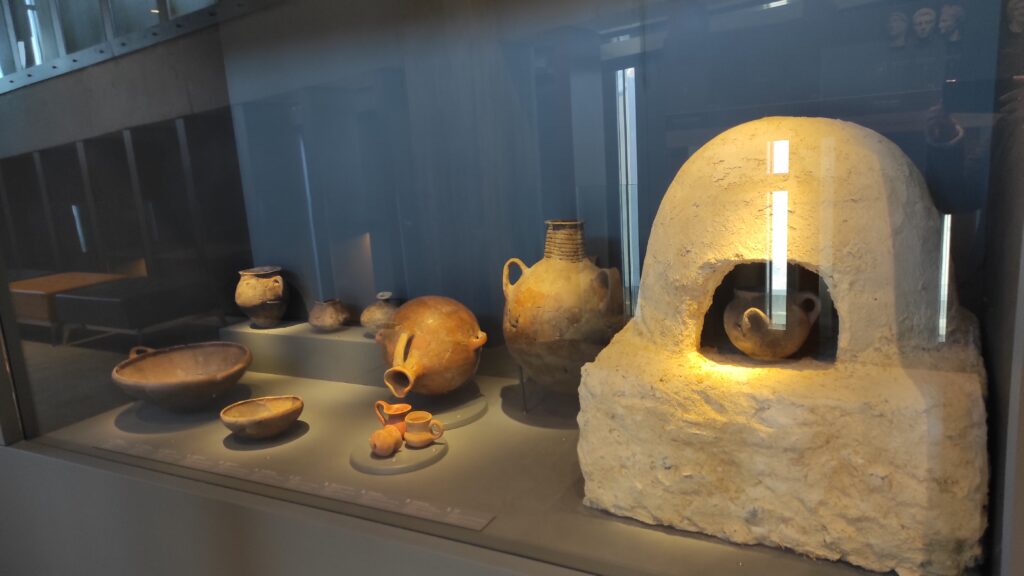
Tevfikiye, one of the villages in the centre of Canakkale, is known for its villagers who have been supporting the excavations since the time of Schliemann. For this reason, an archeo-village project was designed to give the village a touristic identity. In this project, a story was created within the village based on three main components of Troia. They aim to create a sustainable creative interaction ground between Çanakkale city centre and Troia, Tevfikiye Archeo-Village, and to highlight Tevfikiye Archeo-Village as a living cultural area which is identified with Troia in the national and international arena.


Enter the world that is the Anatolian equivalent of the Antique Greek period. Founded by the Ancient Greeks around the 7th century BC, the city of Assos is crowned with an impressive temple dedicated to the Goddess Athena. Although the temple has limited remnants, it stands as the sole Doric example in the Anatolian region.
Among the sights to explore in Assos are the remarkable ancient city walls, a Hellenic city gateway with two massive towers, a Roman theater, a gymnasium, an agora, and the necropolis (cemetery).
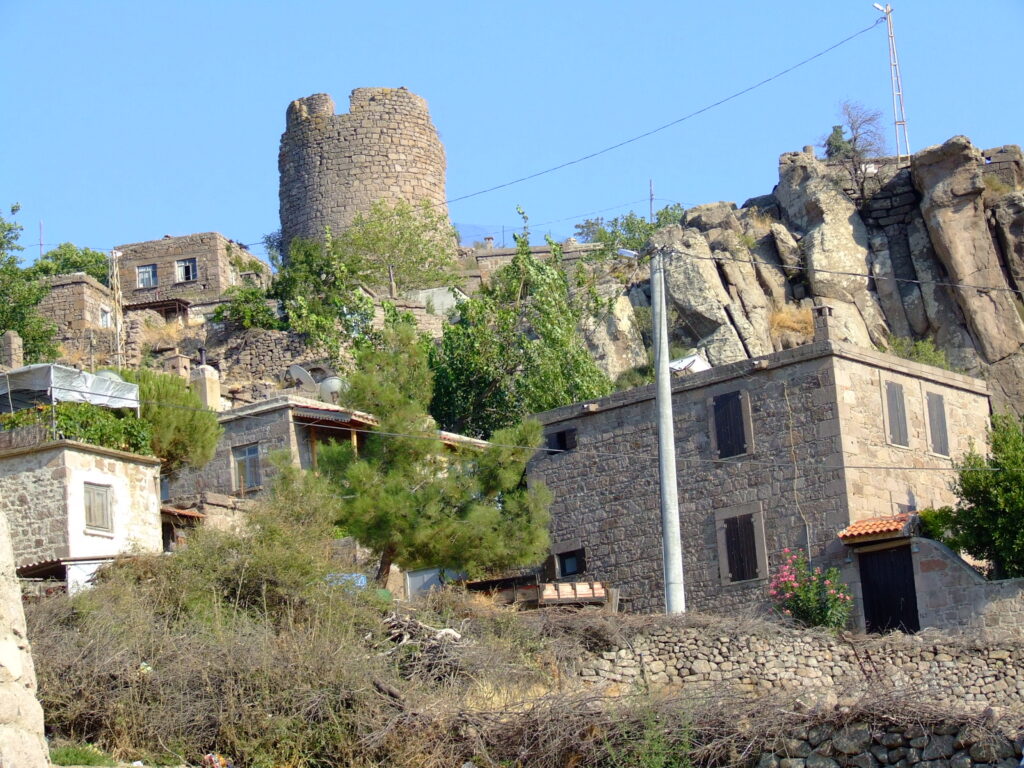
The town also features structures from other periods, including an Ottoman-era mosque and fortress dating back to the 14th century. Excavations at the archaeological site are carried out in cooperation with Canakkale 18 Mart University and the American Institute.
Wandering through the narrow streets of the village, you’ll lose yourself in the historical ambiance, encountering various art galleries, ceramic and glass studios, and souvenir shops.
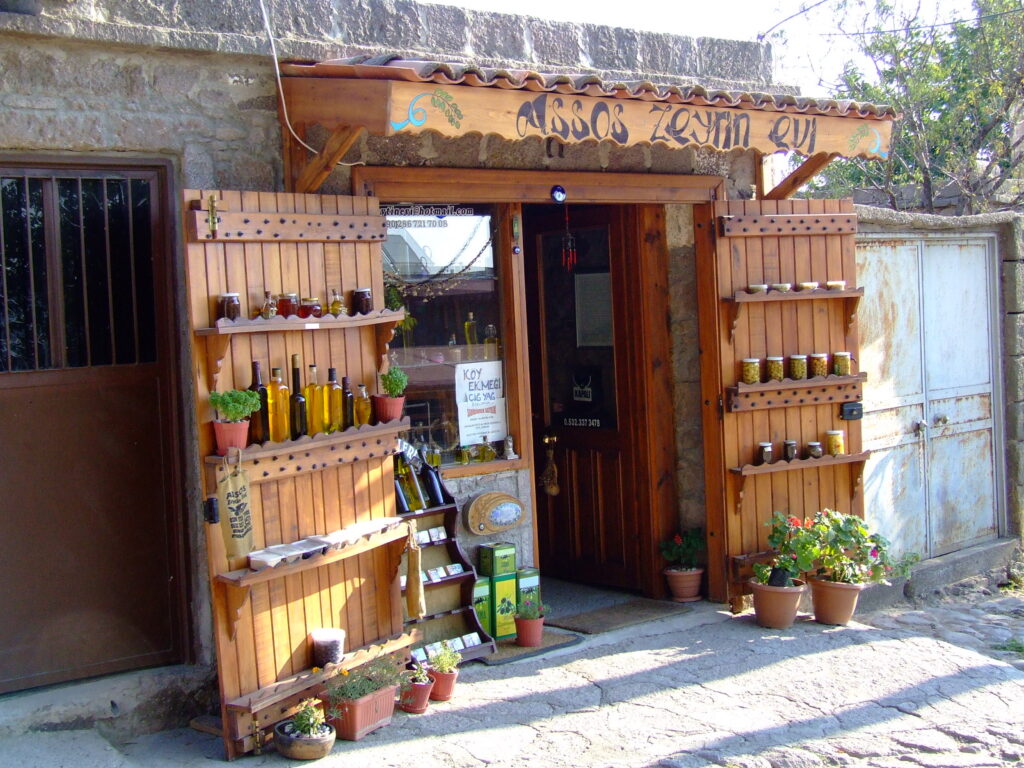
After taking a walk on the Aristotle Road, you can climb to the temple of Athena to salute the sun and complete the day. During the summer season, don’t forget to swim in the beautiful bays and dive into the azure blues.
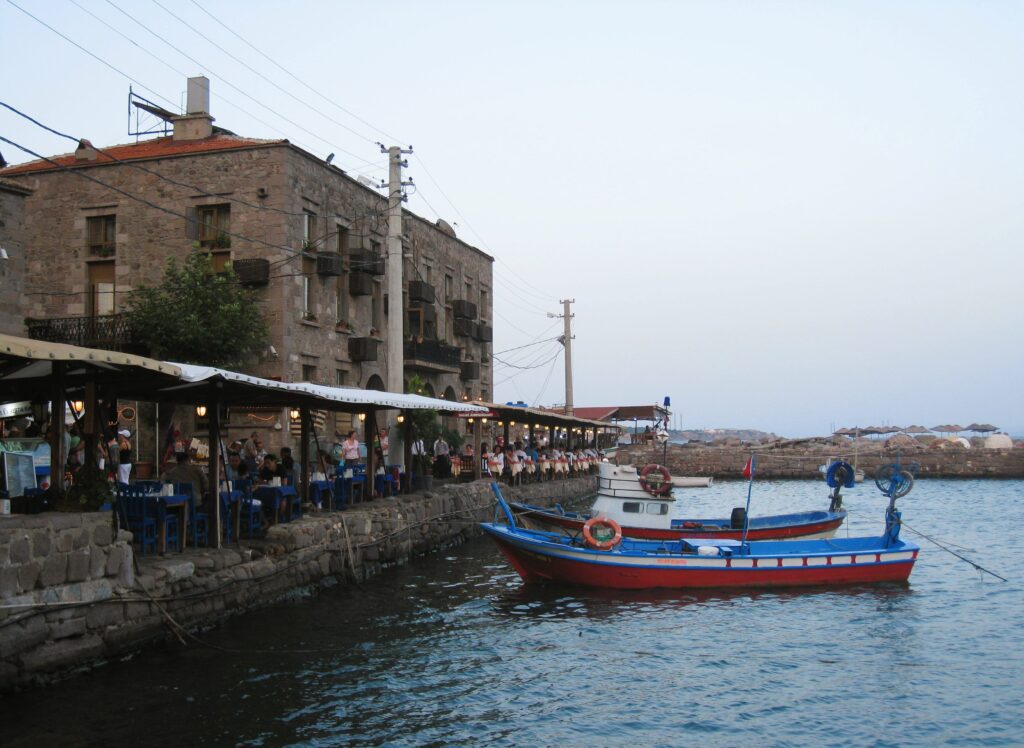
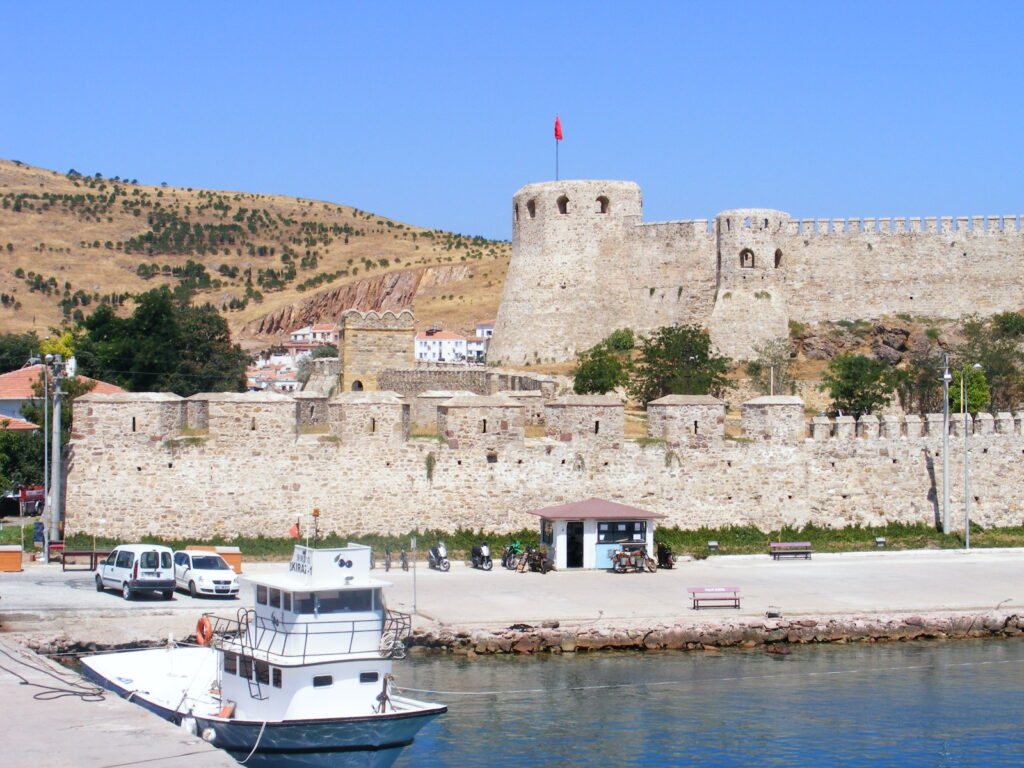
This triangular-shaped island, measuring approximately 5-6 km on each side, lies 5 km from the Turkish mainland. Accessible by ferry from Geyikli district dock, the tiny island welcomes visitors with its castle amidst the deep blue waters.
Known as Tenedos in Greek, Bozcaada is a small Aegean Island, considered the more charming of the two islands in Canakkale. It has a different climate from its surroundings, a clean sea, and a unique lifestyle.
The famous Greek poet Homeros once said, 'God created Bozcaada so that people would live long.'
According to mythology, Poseidon's grandson Tenes was thrown into the sea in a wooden chest and washed ashore at Leucophrye. Climbing the island slopes, Tenes settled there and cultivated grapes from wild vines, making viticulture and wine production the symbols of Tenedos for over 3000 years.

Bozcaada's population has undergone frequent changes due to invasions, migrations, and wars throughout history. After the 1500s, under Ottoman rule, Turks and Greeks fostered a rich common culture. However, starting in the 1960s with the forced migration of the Greek population, viticulture and wine production disintegrated. In the last decade, many efforts have been made to revitalize this old local culture.
Additionally, the island is focused on handicraft production and has become a thriving tourist destination, attracting the interest of both local and foreign visitors. Besides numerous ceramic workshops, art galleries exhibit contemporary artworks.

The island, which becomes quite crowded, especially in summer, is invaded by tourists. For this reason, it is necessary to make reservations in advance for accommodation and restaurants.
Don't forget to swim in the crystal-clear waters of Ayazma Beach before leaving the island. If possible, consider taking a boat trip to explore all the bays.
In both districts (Assos or Bozcaada), dinner promises to be spectacular, offering seasonal fish caught by local fishermen, and delightful salads and appetizers. As you can see, in almost every region of Canakkale, seafood is an anticipant and distinguished part of the city's cuisine.
For accommodation, you can comfortably stay in hotels that have been transformed from the unique structures within these beautiful historical and touristic districts.
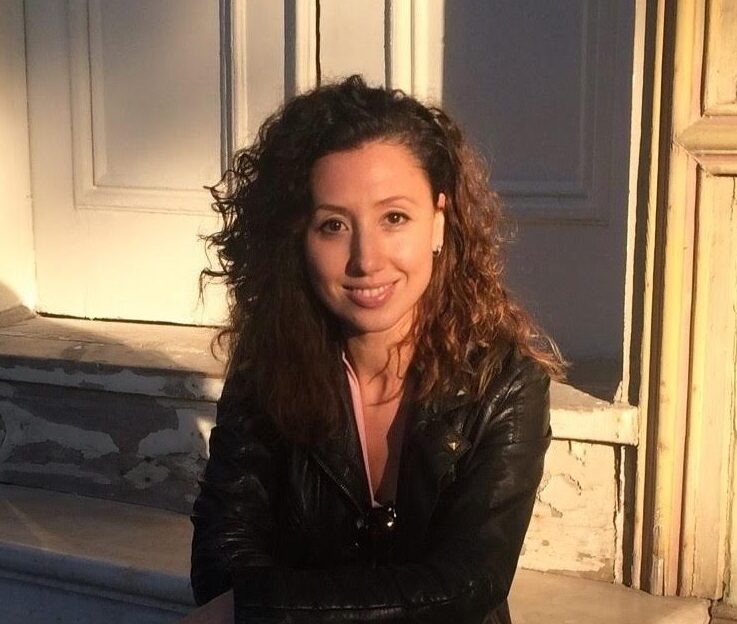
Yeliz Saydan graduated with bachelor's and master’s degrees from Canakkale Onsekiz Mart University at the Ceramics Department. She gained experiences in the fields of culture and arts and participated in EU projects. In particular, she has been conducting research on destinations of ceramic cities. She also took part in an internship program at the Italian Association of Cities of Ceramics, collaborating with Canakkale Municipality to specialize in the subject. Currently studying at the Art and Design Department of Izmir Dokuz Eylul University as a Proficiency in Art student. She carries out her art works and research in Canakkale.
